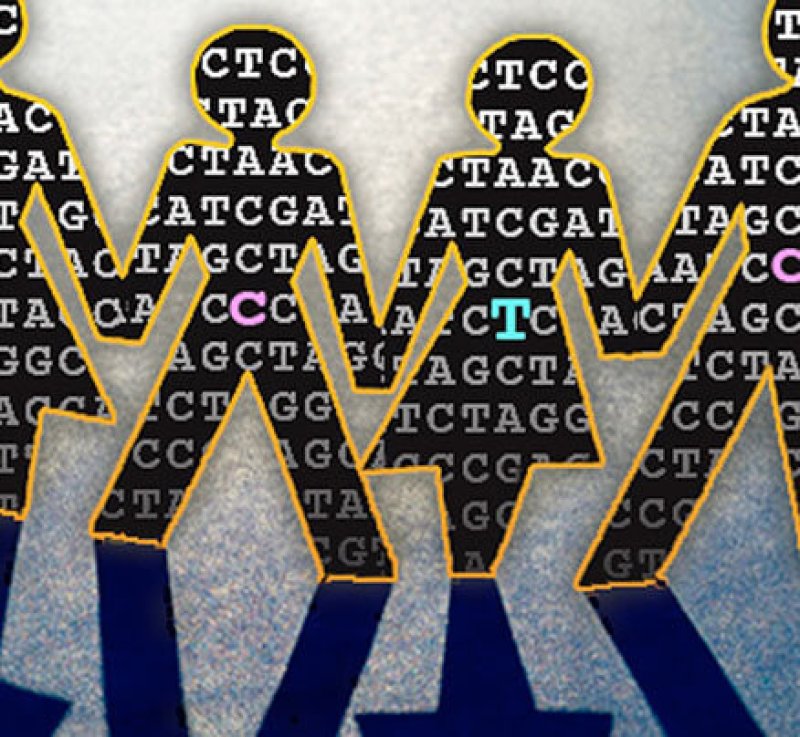Robert Cardiff is a cardiologist by training and a highly respected one. After a couple of confirmation hiccups, he was named Commissioner of the Federal Drug Administration in Feb 2016.
Alongside combating opiate addiction and cancer, Cardiff heads a new program to collect, catalog and analyze one million American genomes for the national Precision Medicine Initiative. But now he thinks that might not be enough. “Let’s think in terms of 10, 20, or 100 million,” he said in an interview with STAT.
One hundred million genomes means nearly one out of every three Americans would need to be sequenced. The cheapest sequencing of a whole genome is now offered at $1,000. Sequencing 100 million of them would cost $1 trillion, although presumably the government could get a deal by buying in bulk so to speak. The Precision Medicine Initiative launched by President Obama in his 2015 State of the Union speech will allot $215 million to include sequencing and a slew of other projects. Where will other funding and data came from?
Cardiff and the FDA have hinted they’re hoping biotech and life science companies will help. Part of the national program has been the launch of a database that will allow researchers and companies to share data for their own analysis. The Journal of Precision Medicine has more:
Participants in the precisionFDA community come from a broad swath of business and industry including pharma companies, genomic testing and informatics providers, healthcare providers, academic medical center and patients, among others. While not a regulatory arm of FDA, the agency anticipates that information generated by the effort will help inform future regulatory pathways and decision making.
President Barak Obama, writing in the Boston Globe, gave more detail on this public private partnership and how it would expand beyond a database into data collection and analysis:
The National Institutes of Health is making major investments in partnerships across the country, including with the Broad Institute in Cambridge, to gather data that could lead to lifesaving discoveries. Building in strong privacy and security protections from the start, NIH is teaming up with regional health care providers and community-based health clinics to sign up a million or more volunteers from all walks of life. The health, environmental, and lifestyle information this diverse group will provide will be analyzed by qualified scientists to generate new insights and one day bring us closer to curing diseases like cancer and diabetes.
Under its call of ‘transparency,’ the precision FDA platform is open source. And one of the data platform’s first projects was to vet contributing labs and companies for their accuracy and consistency. The organization hopes that will build consensus around the best practices for cataloging and analyzing data with the repository. That will also help ensure the results are accurate which is critical for consumer testing approval process, says Aaron Krol at BioITWorld:
This is useful information for the FDA to have for its own purposes. Increasingly, the agency is being asked to study and approve genetic tests for use in diagnosing and treating patients, and to do that effectively, the FDA needs to know if the analytical tools that underpin those tests are precise and replicable.
Some critics argue that the promise of precision medicine has suffered from extreme over-hype. Consider the Human Genome Project which was largely considered to be the gold standard for understanding human disease. The trouble was the problem was far more complicated than we thought. But we had to solve the genome puzzle to understand the other influences like gene regulation and epigenetics that also play a role.
David Dobbs, writing at BuzzFeed, offers a gutting critique of the treatments precision medicine was said to promise, and what actually came to pass:
The genomic age’s signature finding is not any great discovery. It is the yawning gap between the genetic contributions that geneticists assume exist and the genetic contributions they can spot. It is as if they cracked a safe they knew was packed with cash and found almost nothing. The money’s got to be somewhere. But where?
Those criticisms haven’t been addressed very well by the Precision Medicine Initiative.
Another issue with the NIH’s precision medicine database is security. Although our current understanding of genes and their roles in disease, intelligence and good looks is quite limited, we are headed to a future where knowing a person’s genome is a tool to predict the odds of life outcomes. That could be useful information for companies and private citizens that want to cause some trouble or, for example, deny insurance policies.
But consumers do handover their genomes already to consumer companies. And at least one, 23andMe, has reportedly sold pharmaceutical companies access to data from its 1.2 million customers. That makes it less likely those same companies will post their data, for free, in precisionFDA. Ultimately consumers who want to ensure their data is used for research may need to upload their own genomes. Recent government data breaches, however, might dissuade a lot of people.
Meredith Knight is a contributor to the human genetics section for Genetic Literacy Project and a freelance science and health writer in Austin, Texas. Follow her @meremereknight.































